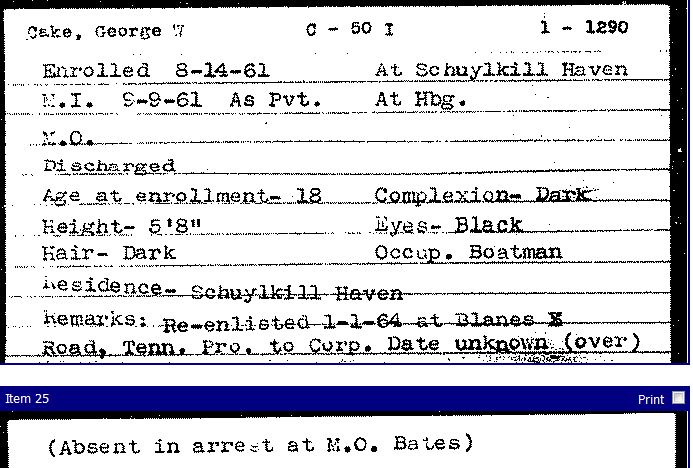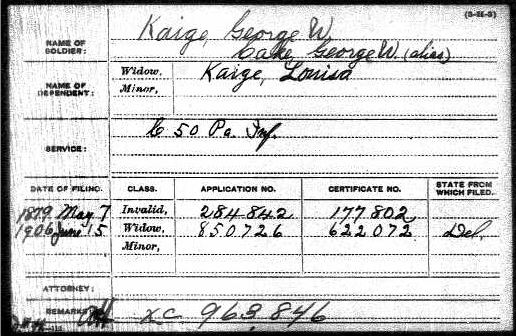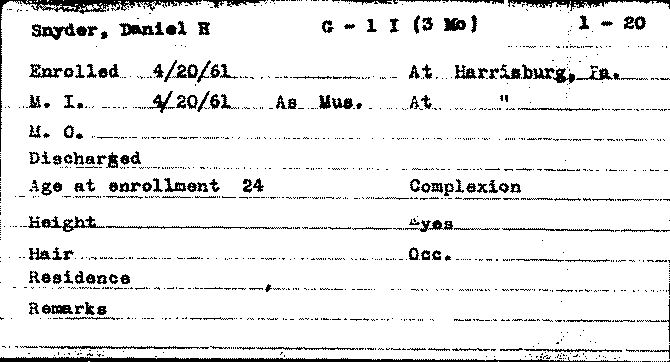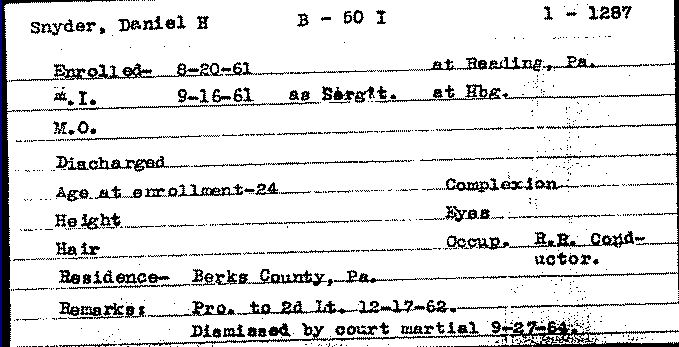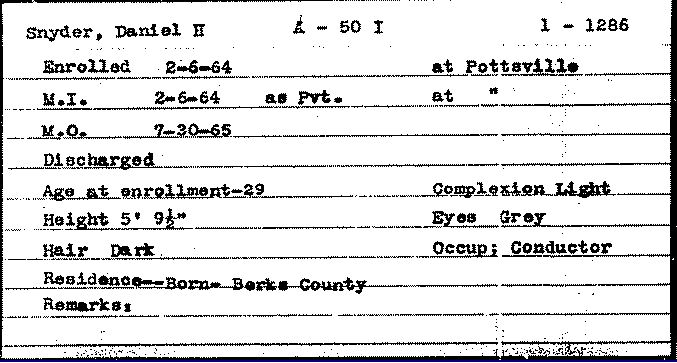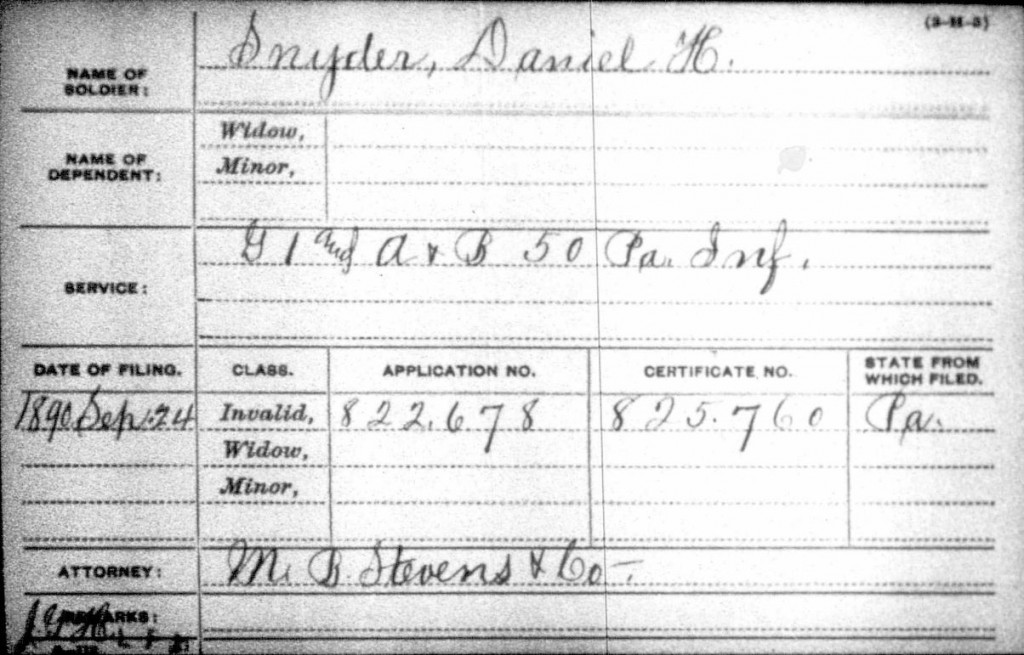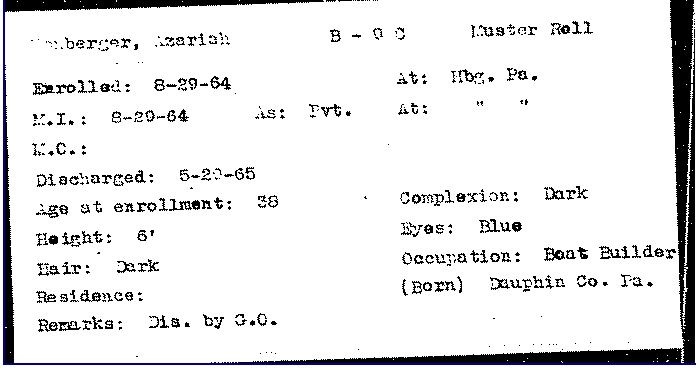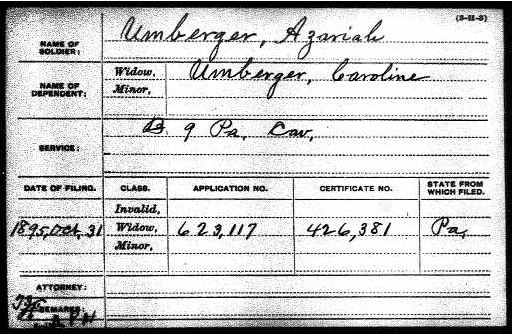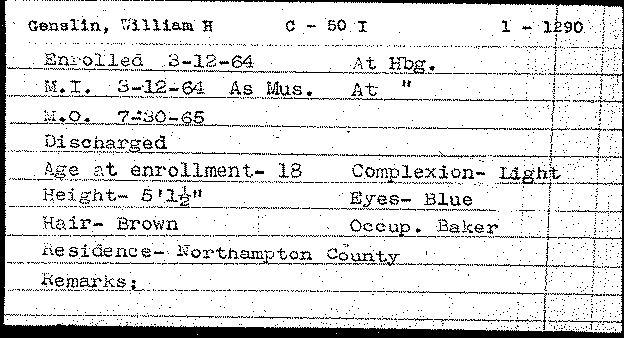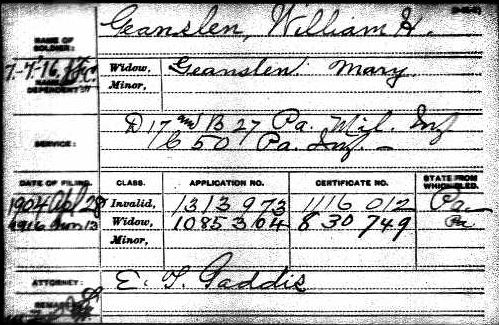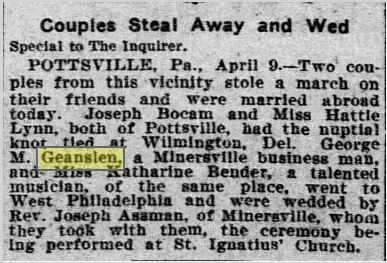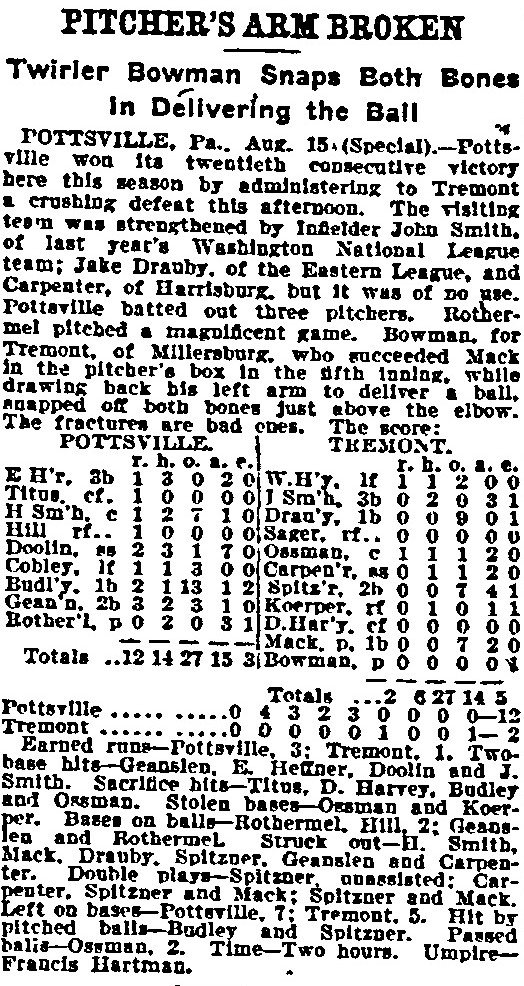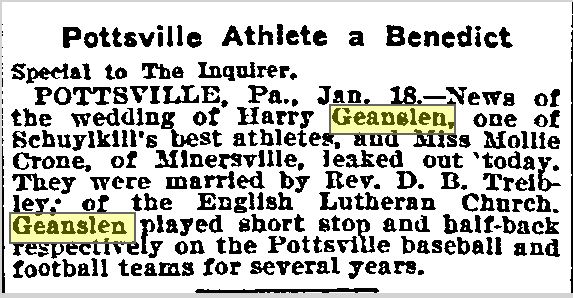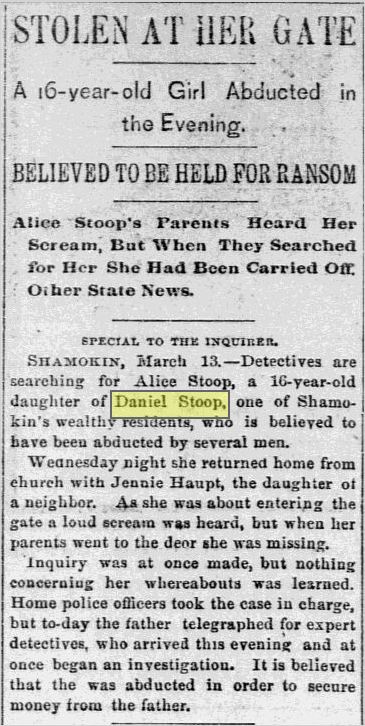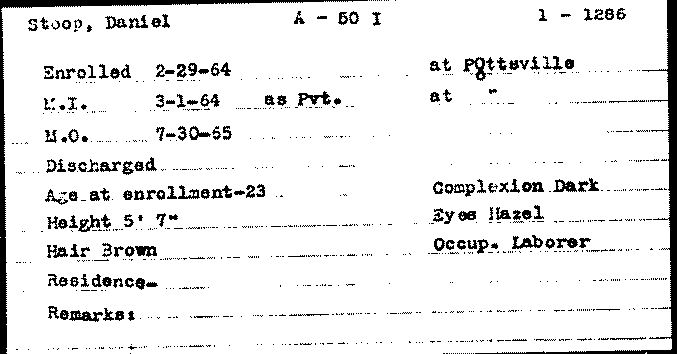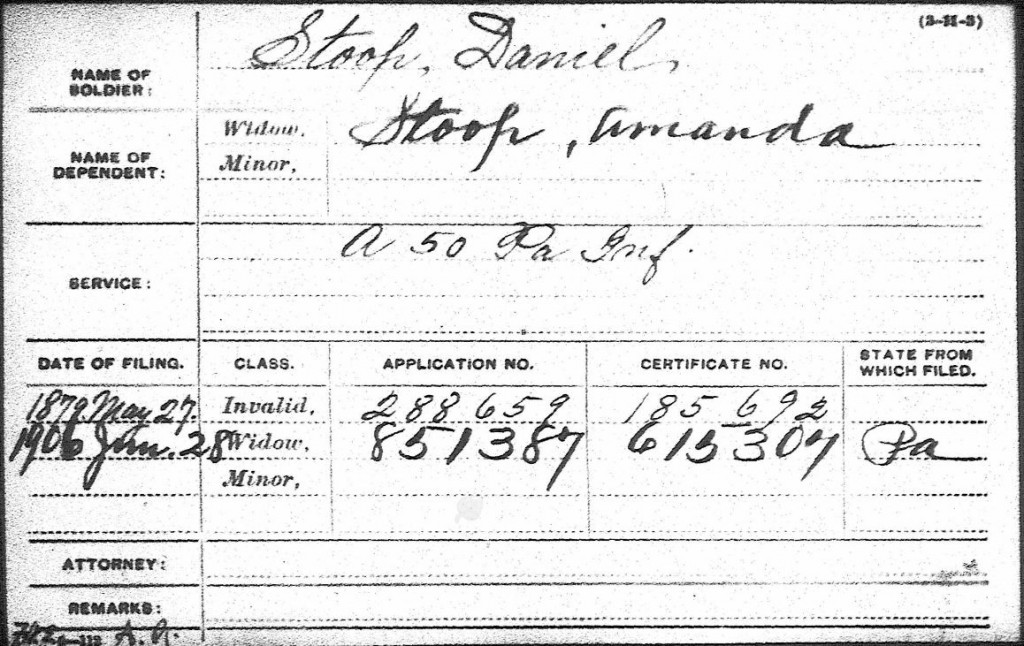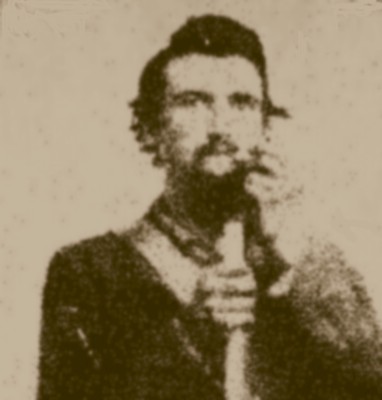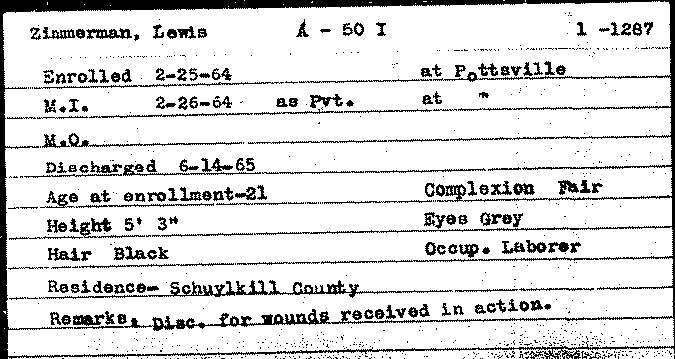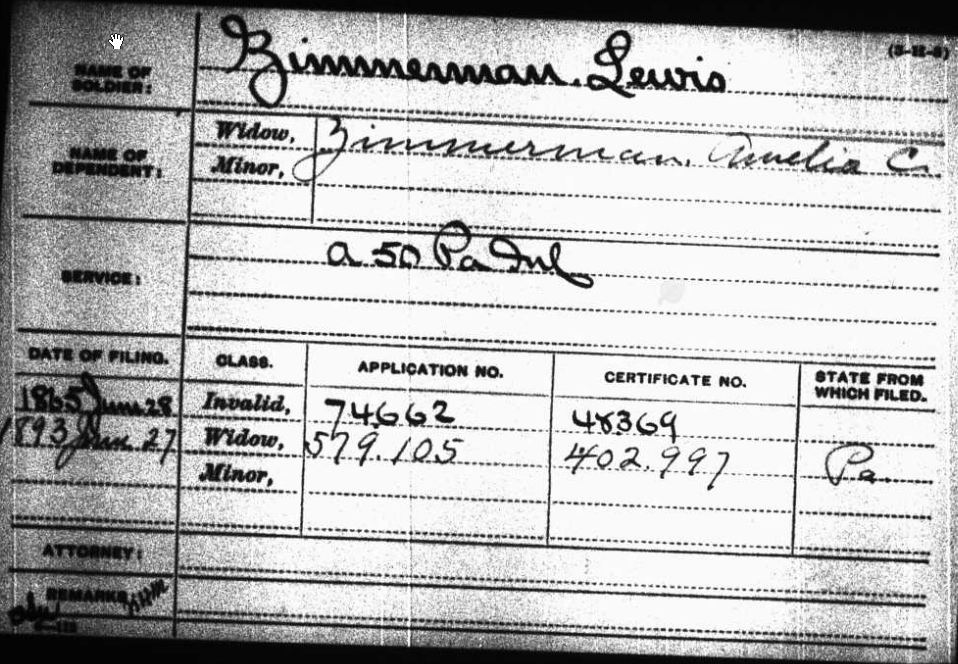Court Martial & Arrest – Two Cases in the 50th Pennsylvania Infantry
Posted By Norman Gasbarro on June 12, 2012
Two unusual circumstances at the time of discharge have been found in the records of the 50th Pennsylvania Infantry. George W. Cake, who served as a Corporal in the regiment’s Company C, was “absent in arrest at muster out” in July 1865. Daniel H. Snyder, who was Sergeant in Company B, was dismissed by court martial on 27 September 1864 There are apparently two different stories here that are in need of further research.
—————————-
GEORGE W. CAKE, alias GEORGE W. KAIGE (about 1843-about 1906)
George W. Cake enrolled in the 50th Pennsylvania Infantry on 14 August 1861 at Schuylkill Haven, Schuylkill County, Pennsylvania. He reported for “muster in” at Harrisburg on 9 September 1861, and was assigned to Company C as a Private. At the time of his joining the regiment, he was 18 years old, had dark hair, a dark complexion, black eyes, and stood 5′ 8″ in height. His occupation was boatman and his residence was Schuylkill Haven – which means that he was employed on the Schuylkill Canal. George served his three year term and at Blaine’s Crossroads, Tennessee, he re-enlisted for another three years or for the duration of the war. At some point (date unknown) he was promoted to Corporal.
In his book A History of Company C, 50th Pennsylvania Veteran Volunteer Infantry Regiment (Charleston: The History Press, 2006), J. Stuart Richards reports that George was wounded in the campaign of May and June 1864, but nothing much about him is told in the history (p. 181). Richards also admits not knowing the reason for Cake’s arrest at the time he was to be discharged.
In the records of St. Matthew’s Lutheran Church, Schuylkill Haven, it is documented that George W. Cake married Emma C. Roan on 20 October 1866. Some time after that George changed his name to “George W. Keage.” This name change is reported as an “alias” on the Pension Index Card:
The Pension Index Card also notes that the widow’s name was “Louisa.” Was this the same person George married in 1866? The 1900 Census for Quincy Township, Franklin County, has a Millwright named “George W. Keagy” with a wife Louisa who claimed that she was married to George since 1864 — possibly indicating that Emma (who married George in 1866) also changed her name. Why was the name change made? Did it have something to do with the statement that George was “in arrest” when his company was mustered out? Louisa Kaige applied for a widow’s pension from Delaware, possibly indicating that the couple moved there – and that the approximate death date of George was 1906.
It is possible that George and Louisa (or George and Emma) had a son named George R. Keagy who was born around 1872, and a daughter named Daisy V. Keagy, who was born around 1880.
At this time, the exact death date, place of death, and place of burial of George W. Cake is not known
——————————
DANIEL H. SNYDER (about 1835- ?)
At age 24, Daniel H. Snyder answered the earliest call for service when he enrolled in the 1st Pennsylvania Infantry on 20 April 1861 at Harrisburg. He was assigned to Company C as a Musician. He was the company “fifer.” On 24 July 1861, he was discharged at the expiration of his three months service.
On 20 August 1861, Daniel reported at a recruitment station in Reading, Berks County, where he was a resident at the time, and enrolled in the 50th Pennsylvania Infantry, Company B, as a Sergeant. Other than his occupation of railroad conductor and his age of 24, no other personal information is given on the Veterans’ Index Card. Following his “muster in” at Harrisburg, Daniel H. Snyder was with the regiment through 1862 and received a promotion on 17 December 1862 to the rank of 2nd Lieutenant. Then on the 27 September 1864, he was dismissed by court martial.
Strangely, Daniel H. Snyder re-appears in the regiment – this time in Company A. His enrollment at Pottsville on 6 February 1864 (months before his court martial in Company B) is hard to explain. The age of “29” is inconsistent with the person who enrolled in the 1st Pennsylvania Infantry and in Company B of the 50th Pennsylvania Infantry – but the place of residence and the occupation appear to be the same. At this enrollment a physical description was recorded: Daniel was 5′ 9 1/2″ tall, had dark hair, a light complexion and gray eyes. The “muster out” date of 30 July 1865 is the same date that the company was discharged.
The Pension Index Card (above) is further proof that the person who was dismissed by court martial from the 50th Pennsylvania Infantry in 1864 is the same person who ended his service in the 50th Pennsylvania Infantry when it was mustered out of service in 1865. And, for whatever reason, after court martial and dismissal, it apparently didn’t affect his pension, which the Pension Index Card notes that he received.
In 1870, Daniel H. Snyder was living in Reading, Berks County, and working as a Locomotive Engineer. He was married to a woman named Mary and had children (dates approximate) as follows: Ellen R. Snyder (1866-?); Minnie V. Snyder (1867-?); Catharine “Kate” Snyder (1868-?); and Daniel E. Snyder (1870-?).
At this time, it is not known when and where Daniel H. Snyder died. He was still alive in 1890 and living in Berks County when he reported to the census that his hearing was bad as a result of his Civil War service.
——————————-
Anyone with additional information on either George W. Cake (alias George W. Kaige and George W. Kaigy) or Daniel H. Snyder is urged to contribute it. Add the information as a comment to this post or send via e-mail to the Civil War Research Project.
This post is a continuation of the study of the men who served in the 50th Pennsylvania Infantry, Company A and Company C.
Pension Index Cards are from ancestry.com. Veterans’ Index Cards are from the Pennsylvania Archives.
 ;
;
